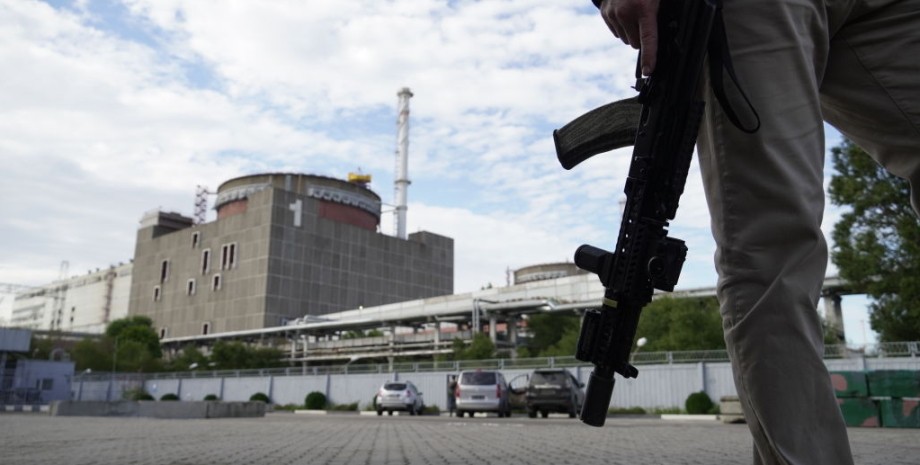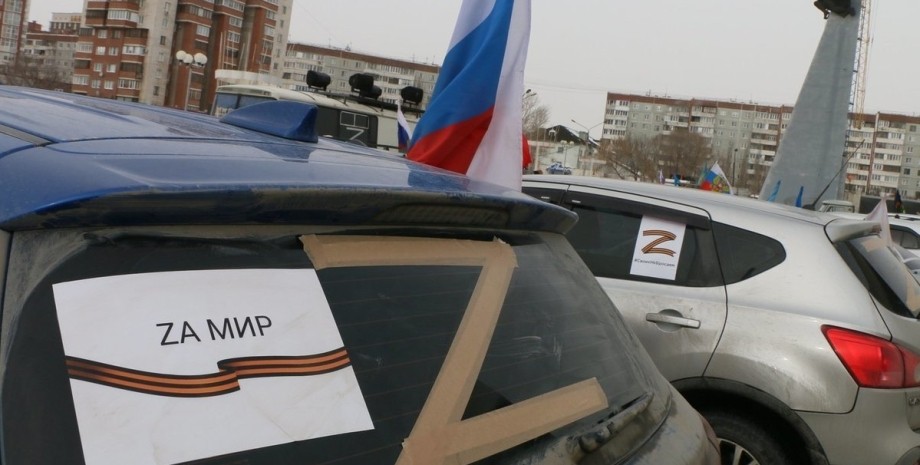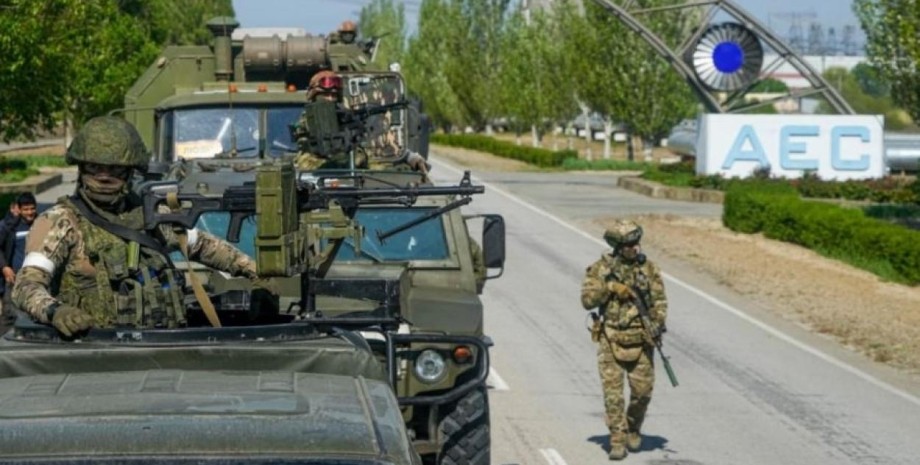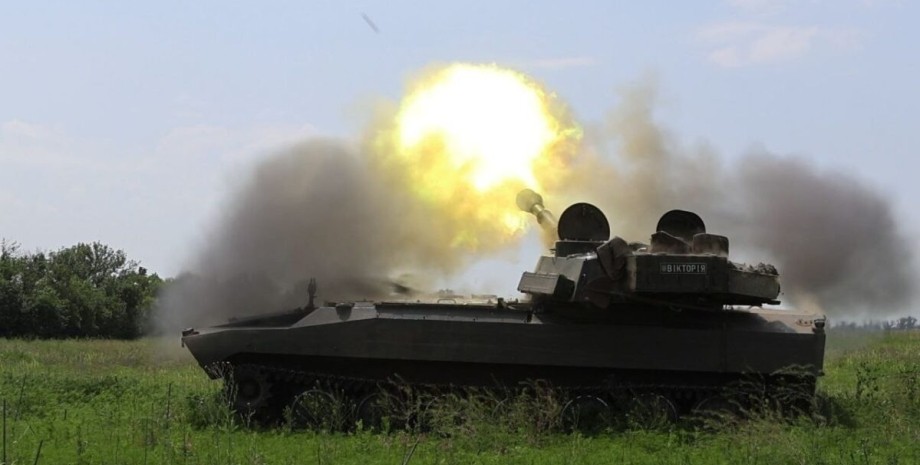
 By Victor Duda
By Victor Duda
Russian rocket terrorism not only destroys energy infrastructure, but also shakes nuclear security in Ukraine, where four NPPs - 15 working units with a total capacity of 13. 835 GW. During the barbaric aggression of Russia, they are all at risk. The largest in Europe in total capacity of the Zaporozhye Nuclear Power Plant (ZPP) was occupied. Other NPPs suffer from damage to energy infrastructure. On November 23, the Russians were targeted at energy objects.
As the People's Deputy Alexei Goncharenko reported in his telegram-channel, there was an emergency stop of power units at the South Ukrainian NPP. Khmelnytskyi Ova chairman Sergey Gamaliy reported that the KhNPP units were disconnected from the grid. Earlier, during the Russian rocket attack on November 15, the Khmelnytsky Nuclear Power Plant (KhNPP) completely lost access to the power grid and was forced to temporarily switch to diesel generators.
This was stated by Raphael Mariano Grossi, CEO of the International Atomic Energy Agency (IAEA), with reference to information from the Ukrainian authorities. The IAEA explains that the reactors, even when they are stopped and not produced electricity, power supply is required for cooling and other important functions of nuclear safety. Therefore, in the event of any NPP force majeure, diesel generators are equipped with electricity needs for several days until the damage is eliminated.
According to the IAEA report, the KhNPP's connection to the mains was completely lost at 18:35 on November 15, which was why two reactors of the station had to be stopped. The connection through two reserve lines was restored in more than nine hours. Meanwhile, the Rivne atomic power plant (RAPS) has lost its connection to one of the power lines of 750 kV, which has decreased and one of four blocks automatically switched off.
Grossi warned that the situation with nuclear safety and protection in Ukraine can suddenly worsen, increasing the risk of nuclear accident. "The impact of missile shelling on NPPs is quite significant, but the information about it is closed.
For example, the details of the latest events at the RAPS and KhPPs, which have a significant electricity deficit, we only learned from the IAEA message," Yuriy Korolchuk, an expert of the Institute, comments on the situation Energy strategies, according to Korolchuk, problems with substations that can be located not only near the NPP, but further along the route of electricity supply to the regions, are to be disconnected during the shelling, the need to switch to reserve lines, if any, and operational repair .
Also, the interlocutor of the focus is worried that the units constantly increase their capacity, actually carrying out maneuver activity, albeit controlled. And if the KhNPP, according to the expert, projected as a single station in Ukraine, where official tests, experiments and testing were allowed to reduce and increase capacity, that is, maneuverability, then the RAPS was not envisaged. Disabling NPPs from the network can have threatening consequences.
To avoid them, in the absence of power supply, the blocks are connected to the generators. As noted above, the two blocks of the KhNPP have recently worked for nine hours. "If the generators do not work and there is no electricity from other sources, the next action should be a complete stop of blocks - not even translating them into a cold state, but in fact the beginning of the process of nuclear power plant conservation.
If this pessimistic scenario is implemented, the station will actually fall out of work. Therefore, ours Energy to the last opportunity will support the power of blocks from generators and bring fuel for them, ”Korolchuk says. According to the expert, blocks translated into cold condition can work from generators for 10-14 days, which should be enough to resolve the issue even with a global blackout.
"In the event of power outage from the network, backup generators are included, and the block must be opened. To translate it into a cold state, reduce the temperature of the first circuit, which relieves heat from a nuclear reaction, it takes 15 hours, and then electricity is required for the operation of pumps and more - Olga Kosharna, nuclear energy expert, is explained.
-However, diesel generators at stations are quite old, still in Soviet production, and although they were modernized, there is no guarantee of 100 % without failure. " The focus interlocutor warns that in case of refusal of the generators, the time begins before the melting of the active area of the reactor, which threatens the consequences, as on Fukushima. Particularly significant risk of such a threatening situation at the ZPP, which is under the control of the occupiers.
In the case of RAES, the risks increases its relatively short distance from the border with Belarus. Recall that during a cold stop the nuclear reactor does not generate electricity. That is, when the blocks are forced to translate into such a mode, there is a shortage of electricity generation in the power system, not just through the capacity of power grids, from which Ukraine suffers after the start of terrorist attacks of Russians on the power system in October 2022.
"On November 15, the Russians were beaten by nodal transformer substations, which was why they interrupted all four lines of 750 square meters at KhNPP. At the South Ukrainian Station, one line was also interrupted to Odessa. As a result, because of the shelling on November 15, Ukraine lost 4 thousand MW of capacities at once. As the Ukrainian and Russian power systems were synchronized before the war, the Russians know all the "thin" places "where they need blows, " - explains Olga Kosharna.
Unfortunately, the repetition of situations such as November 15 cannot be excluded. As Kosharna notes, the attacks are repeated as soon as the Ukrainian side has time to somehow repair the damage. The Russian Federation has bombed five times. Repairs complicates that the substations of Ukraine have inherited from the USSR and analogues of equipment in Europe.
The continuation of fan and emergency power outages, including generation deficits, is quite realistic, at least, before the end of the heating season. The most critical situation has emerged in the ZPP, which is under the control of Russians, used as a military base and is fired. The IAEA reports that repeated shelling at the site of the NPP in the evening, November 19, and in the morning, November 20, damaged buildings, systems and equipment, and some explosions occurred near the reactors.
"Again, we were lucky that the potentially serious nuclear incident has not happened. The next time we may not be lucky. We must do everything that in our power, so that the next time there was no such thing," Rafael Mariano Grossi commented on this event . According to the alarming messages of the nuclear regulator, there are personal tragedies of thousands of employees of the enterprise.
"The staff of the station is exhausted psychologically, and in order to make non -standard and responsible decisions on the repair of infrastructure damaged after shelling of pipelines and cables, a mental equilibrium is needed," says Olga Kosharna. When the engineer who refused it was initially canceled at the NPP, and a week later they were drawn in the torture.
" The Wall Street Journal in its recent material, citing Energoatom data, reports that more than 200 employees have been detained and dozens are considered missing. Based on eyewitness testimony, the article tells that the spirit of some people is broken, so they were so strongly beaten. On the other hand, the staff is responsible for collaboration in Ukraine.
After all, Energoatom is urged to inform about possible cases of state betrayal, collaboration and signing of applications, agreements and contracts with the fake JSC "Operating Organization of Zaporizhzhya NPP" or other Rosatoma enterprise. We will remind, now the units on the ZPP in the occupied energy are in a cold state, ie they do not produce electricity. The last unit was stopped on September 11. Repeatedly, power supply during the network shutdown had to be maintained with generators.
To return the station under the control of Ukraine is to save its employees from the terrible existence under the muzzle of machine guns, and to return electricity to the power grid of Ukraine - six blocks of 6 GW. "If the ZPP returns under the control of Ukraine, first the army, special services will come there, and only after that it will be possible to talk about the restoration of work.
Currently, Ukrainian media are actively discussing the creation of an innovative energy system in Ukraine on the basis of small modular reactors. The US Presidential Commissioner John Kerry and Energy Minister of Ukraine Herman Galushchenko has already announced the relevant pilot project, as reported by the US Department of State. However, at least as I would like to see in this project a panacea to solve energy problems, it is a long -term perspective.
"This is the theory in the direct sense of the word. There are scientific developments in this direction, but so far it is a raw" paper "product. We are actually invited to engage in the process of research, development and cooperation to go to production. And the question remains whether part of this production will be open In Ukraine, we will only act as a platform for the arrangement of these installations, " - comments Yuri Korolchuk.
That is, small modular reactors, according to Korolchuk, will not change the situation in Ukraine either now or 1-3 years. Korolchuk also doubts the expediency of replacing hundreds of small modular reactors with a capacity of 100-150 kW of workers in Ukraine 15 power units, which are much easier to balance and administer than, say, 150 small ones.
"In order to implement such endeavors, it is necessary to have a government -approved industry development program, which should fit into Ukraine's energy strategy. The atomic energy program was to be approved in 2020, but not done. And because of the war with Russia, another strategy is now needed ", - comments Olga Kosharna.
It should be clarified that the development of a long -term program of development of atomic energy of Ukraine within the framework of the implementation of the "Energy Strategy of Ukraine for the period up to 2035" provided for Presidential Decree No. 406/2020. Kuharna also warns that small modular reactors in the world have not yet been put into operation, and only reference technologies can be used under Ukrainian legislation.
However, experts interviewed by focus agree that these promising technologies, in any case, need to be engaged. According to Korolchuk, small reactors can be used as a maneuverable generation. "This is a very promising direction. Ukraine should create a joint venture and maximize the production of small modular reactors to make a hub for their sale to India, China, the Middle East, etc. Olga Kosharna.
The focus interlocutor reminds that for the development of this area of "Energoatom", as well as the State Nuclear and Radiation Safety Center in 2019, a Memorandum of Holtec International was signed in 2019 to create a consortium for the study and implementation of SMR-160 in Ukraine technology.




















Všetky práva vyhradené IN-Ukraine.info - 2022